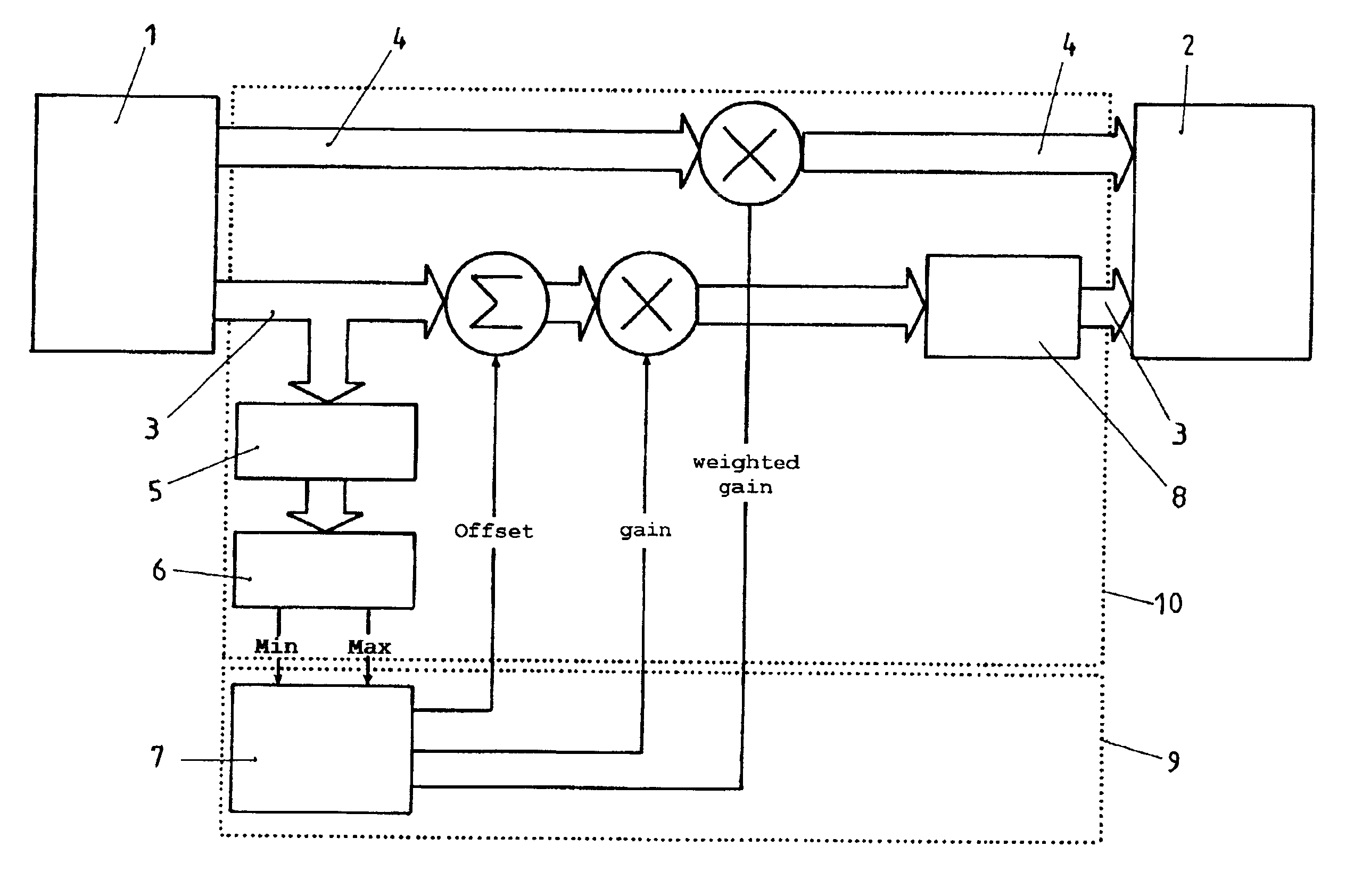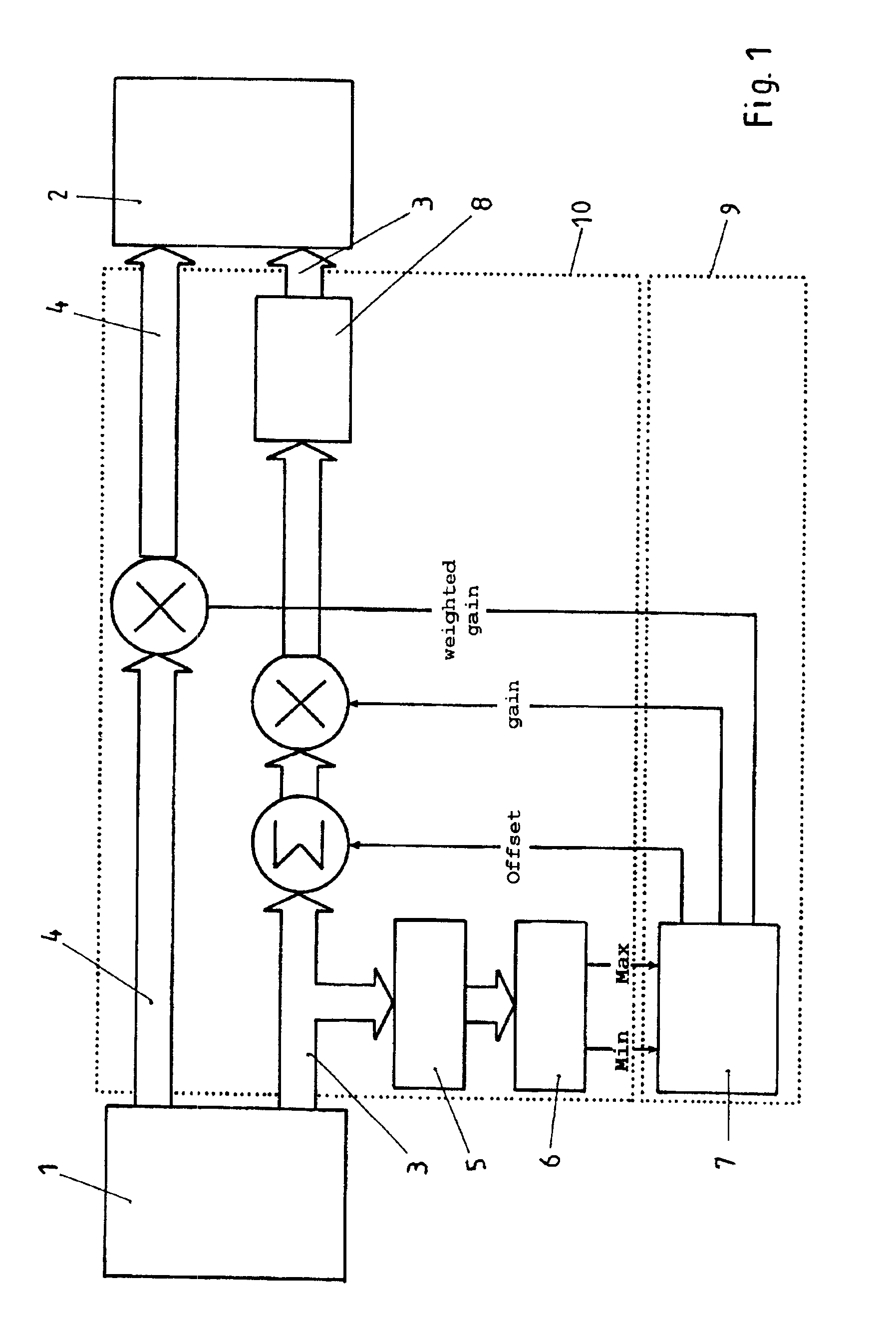Method of improving a signal in a sequence of images acquired with a digital color video camera
a color video camera and image sequence technology, applied in the field of improving the signal in the image sequence acquired with a digital color video camera, can solve the problems of reducing the real-time capability of digital image processing, and limiting the complexity of the novel method. , to achieve the effect of avoiding delay and limiting the complexity of the novel method
- Summary
- Abstract
- Description
- Claims
- Application Information
AI Technical Summary
Benefits of technology
Problems solved by technology
Method used
Image
Examples
Embodiment Construction
[0031]Referring now in greater detail to the drawings, FIG. 1 illustrates the principle of the novel method which starts from a digital video signal 1, and which outputs a modified video signal 2. In the illustrated exemplary embodiment, both video signals 1 and 2 are YUV signals of the type 4:2:2 according to video standard ITU-R BT.601 / 656. These digital video signals contain a brightness signal component 3 and a color signal component 4. The brightness signal component—which in this case is the Y component—according to ITU-R BT.601 / 656 has a value in the range of between 16 to 254, while the color signal—which in this case is the UV component and which is also called color difference signal—has values in a range of between 16 to 240. The latter value range (16-240) corresponds to 128±112, the value 128 representing a non-colored picture element.
[0032]The brightness signal component 3 is split to obtain a branch that can be evaluated. In this branch, step 5 levels or smoothens the...
PUM
 Login to View More
Login to View More Abstract
Description
Claims
Application Information
 Login to View More
Login to View More - R&D
- Intellectual Property
- Life Sciences
- Materials
- Tech Scout
- Unparalleled Data Quality
- Higher Quality Content
- 60% Fewer Hallucinations
Browse by: Latest US Patents, China's latest patents, Technical Efficacy Thesaurus, Application Domain, Technology Topic, Popular Technical Reports.
© 2025 PatSnap. All rights reserved.Legal|Privacy policy|Modern Slavery Act Transparency Statement|Sitemap|About US| Contact US: help@patsnap.com


